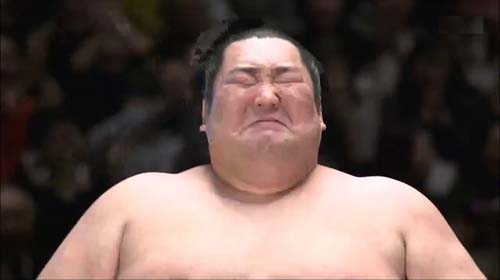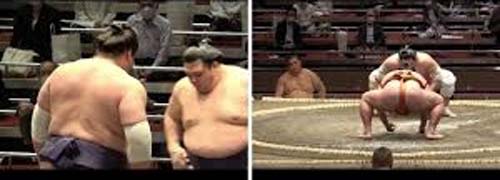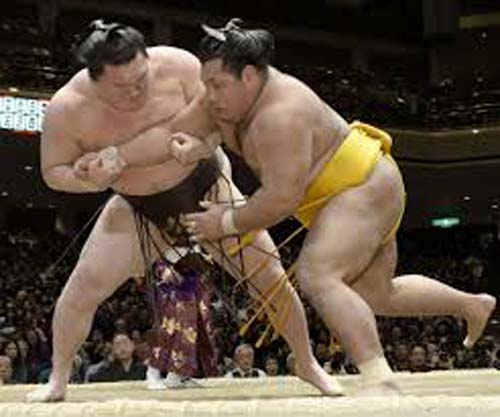
Sumo stables housed in older structures becoming rare sight
John Gunning
It’s been a rough 14 months for Kakuryu since the passing of his former stablemaster resulted in the closure of Izutsu Beya and the yokozuna’s relocation to Michinoku stable.
The Mongolian veteran went into the September 2019 tournament as defending champion, with his 14-1 title winning performance in the previous meet seemingly the sign of a late career resurgence.
But while Kakuryu did come close to a seventh championship in March this year — just losing out in a final day loss to Hakuho — he has also missed 63 of 75 bouts in the five other tournaments held since that last Emperor’s Cup win.
Things outside the ring haven’t been much better for the Ulaanbaatar native.

Kakuryu began the naturalization process for Japanese citizenship in 2018, but difficulties in obtaining the required paperwork from his home country means that were he to retire now, the yokozuna would be forced to leave sumo entirely, as only Japanese nationals are allowed possess elder stock.
Further bad news came this week with the announcement that demolition of Izutsu stable was getting underway Wednesday.
While “heya” or “beya” literally mean “room,” when it comes to sumo, “stable” has long been the standard translation. This of course conforms to the customary use of stable as a collective noun for sporting teams housed together, whether they be human (boxers), animal (horses) or machine (cars). Scuderia (stable) Ferrari of course manages to combine all three, having human drivers in a car with a horse logo.
Izutsu Beya (the collection of wrestlers, referees and ring announcers among others) hasn’t existed since 2019, but the building that held them still stood as of this week.
From his arrival in Japan as a teenager in 2001, Kakuryu spent almost two decades living and training in that very building, so it’s no surprise that the yokozuna was emotional this week when telling journalists its demolition felt like losing his own home, and that he would carry its memories with him forever.
Given that the structure was one of the more run-down in the sport, its razing hardly comes as a surprise, however.

In a country with ever improving earthquake resistance standards, having a relatively short shelf life on buildings ensures that most offer the best protection possible. Return to almost any area of Tokyo after an absence of 10 or 15 years and you will notice significant change in the surroundings. Constant renovation and rebuilding also helps keep the construction industry afloat in a nation where a large proportion of the available land has already been developed. Sumo buildings aren’t exempt from such Doozer-like activity.
Over 80% of the new stables established in the past 20 years are housed in new and purpose-built structures. In many cases they are part of a larger apartment block with several floors above the stable containing privately owned units.
Financing a new stable isn’t cheap, however, and it’s not unusual for a newly established heya with a young stablemaster to rent or use temporary premises for a few years before moving somewhere better.
When Onoe stable branched off from Mihogaseki in 2006, its wrestlers, including future ozeki Baruto, trained for a few years in what was essentially a converted garage. Space was so tight that the stable’s refrigerator and chest freezer were on the ground no more than a meter away from the edge of the straw bales. It was literally possible to reach out, open the fridge and grab a cold drink while inside the ring. Countless other items were stacked around the edges of the practice area as well, meaning every time a rikishi allowed himself to be thrown from the ring he courted disaster. The floor wasn’t lava, but it was covered with crates full of beer bottles.
Not every new stable builds new premises though. Musashigawa Beya is located in the old Nakamura stable building, while Chiganoura Beya, the home of Takakeisho and Takanosho, occupies the former Takasago stable building just north of Asakusa.
As with Kakuryu’s old lodgings, most stable closures result in the tearing down of the existing building.
Magaki, Hanakago, Tatsunami and Nishonoseki stables in the Ryogoku area were all demolished and replaced by apartment blocks over the past decade or so. The loss of Nishinoseki, with the heya name written large in three-story-tall characters down the front of the building, robbed the area of one of its more notable stables.
It’s easy to understand Kakuryu’s pain over the loss of Izutsu. Watching excavators tear up the practice ring and knock over the teppo pole at Magaki stable — where I’d spent many mornings before work watching training and hanging out with the rikishi — was like a knife to the heart.
Just as rikishi retire and stable masters leave the sport, so too do the buildings housing them. Change is as much a part of sumo as it is any other walk of life. For rikishi and others closely involved in the sport though, those stables with their memories of thousands of hours of spilled blood and tears are much more than mere practice facilities. Every time one disappears it leaves a hole emotionally as well as physically.